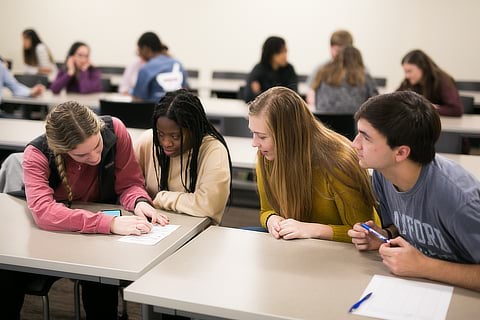
Samford University leads in high-impact education according to data reported in the 2021 National Survey of Student Engagement (NSSE). Samford’s graduating seniors in the class of 2021 reported higher levels of student engagement compared to both private southeastern institutions and peer national doctoral/professional institutions.
The annual NSSE survey, involving first-year and senior students, represents empirically confirmed practices in undergraduate education that reflect positive student learning outcomes. NSSE has been in operation since 2000 and has been used at more than 1,600 colleges and universities in the U.S. and Canada. The NSSE questions explore student study habits, educational plans and experiences, time spent out of the classroom, and satisfaction with the campus, faculty and curriculum. Additionally, NSSE also provides results on six “high-impact practices” that are positively associated with student learning, development and retention.
According to NSSE, “High-impact practices share several traits: They demand considerable time and effort, facilitate learning outside of the classroom, require meaningful interactions with faculty and students, encourage collaboration with diverse others and provide frequent and substantive feedback. As a result, participation in these practices can be life-changing.”
Compared to students of other private universities in the southeast as well as peer national doctoral/professional institutions, Samford senior students reported significantly higher participation in all of the high-impact practices assessed:
- 82% complete a culminating senior experience, such as a capstone course or senior project or thesis
- 73% complete at least one internship by the time they graduate
- 74% participate in service-learning activities
- 56% work directly with a faculty member on a research project
“The results of the 2021 NSSE survey affirm the quality of the student experience at Samford,” University Provost Mike Hardin said. “Our faculty and staff are committed to delivering rigorous academic programs in an environment that promotes student engagement through a variety of learning experiences.”
In addition to the evaluation of high-impact practices, NSSE results serve as an essential data source for various levels of accreditation and academic program review. In commitment to continuous assessment and improvement of the undergraduate experience, Samford administers the survey to its students annually.
